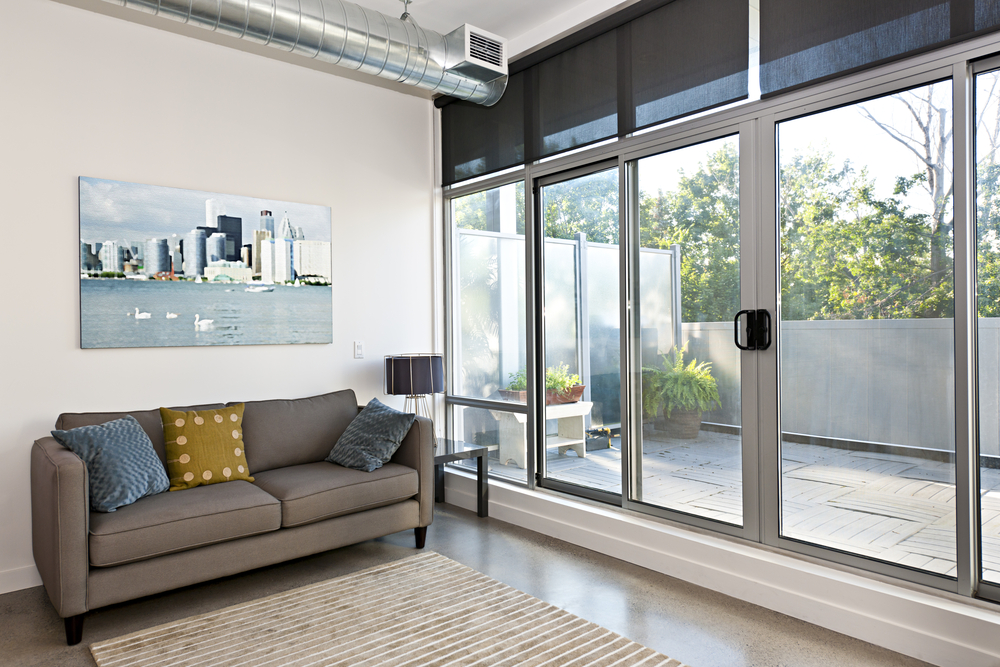Sliding glass doors, while enhancing aesthetics and access, can be vulnerable points in home security. Effective reinforcement involves addressing their common weaknesses: inadequate locks, the potential for being lifted off tracks, and large glass surfaces. Here are professional strategies to significantly enhance their security.
Strengthen Locking Mechanisms
Standard factory latches are often insufficient. Upgrade with these options:
-
Heavy-Duty Primary Locks: Opt for robust mortise locks or multi-point locking systems. These secure the door at several locations along the frame, offering superior resistance to forced entry compared to single-point latches.

-
Secondary Locking Devices: Add crucial layers of physical security:
- Security Bars (Charley Bars): Placed in the interior door track, these metal or wooden bars physically prevent the door from being slid open. Both adjustable and custom-cut fixed-length versions are effective.
- Loop Locks / Bolt Locks: These connect the sliding panel to the door frame, requiring a key or specific action to disengage, providing a strong secondary locking point.
- Foot-Operated Locks: Installed at the base of the door, these engage a steel bolt into the floor or lower frame, offering discreet yet powerful reinforcement against forced sliding.
- Keyed Patio Door Locks: These function similarly to a traditional deadbolt, specifically designed for sliding doors, and can often be keyed to match existing house keys for convenience.
Prevent Door Lifting from Tracks
A common bypass method involves lifting the sliding panel out of its tracks. Counter this vulnerability:
-
Anti-Lift Devices: Install screws into the upper track, ensuring they protrude down enough to significantly reduce vertical clearance without impeding normal operation. Alternatively, purpose-built anti-lift blocks can be fitted.
-
Track Inserts/Blockers: Place precisely cut wooden dowels or specialized metal blockers into the accessible portion of the track when the door is closed and locked. This physically obstructs movement and lifting.
Reinforce Glass Panes
Large glass surfaces can be targets. Enhance their resilience:

-
Security Window Film: Apply a transparent, impact-resistant polyester film to the interior surface of the glass. This film holds shattered glass fragments together, significantly delaying or preventing entry even if the glass is broken. It also minimizes injury from flying shards.
-
Impact-Resistant Glass Panels: For a higher level of protection, consider replacing standard glass with laminated security glass or polycarbonate panels. Laminated glass consists of multiple layers of glass bonded with a strong polymer interlayer, while polycarbonate is exceptionally strong and shatter-resistant.
Integrate Alarm Systems and Deterrents
Detection and deterrence are vital components of comprehensive security:
-
Door and Window Contact Sensors: Equip the sliding door with magnetic contact sensors linked to a monitored or local alarm system. These will trigger an alert if the door is opened.
-
Glass Break Detectors: Install acoustic or shock-based glass break sensors nearby. These devices are calibrated to detect the specific frequencies or vibrations associated with breaking glass, providing an early warning.

-
Visible Security Measures: Prominently displayed decals from a security company or the presence of visible security cameras can act as a deterrent to less determined intruders. These should always supplement robust physical security.
Achieving Robust Security:
A multi-layered approach combining several of these measures offers the most effective defense for sliding glass doors. Regularly inspect all installed security features to ensure they are functioning correctly and providing continuous protection.












